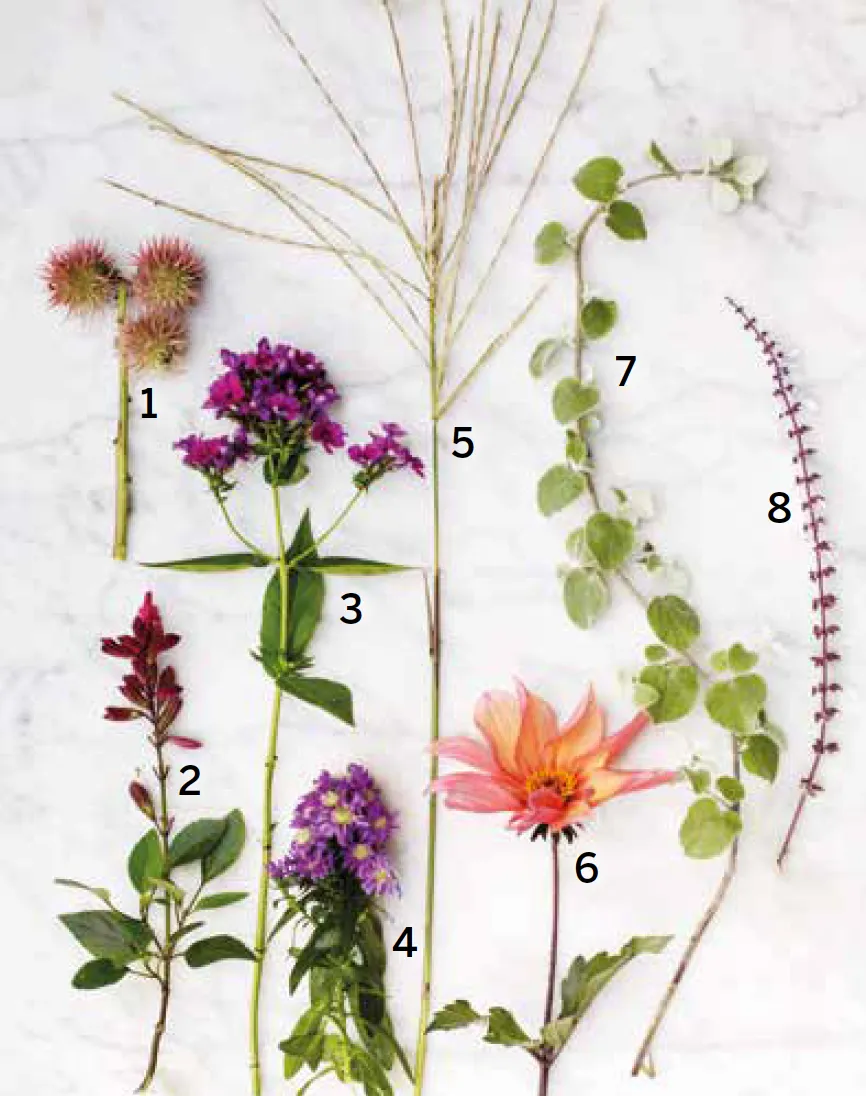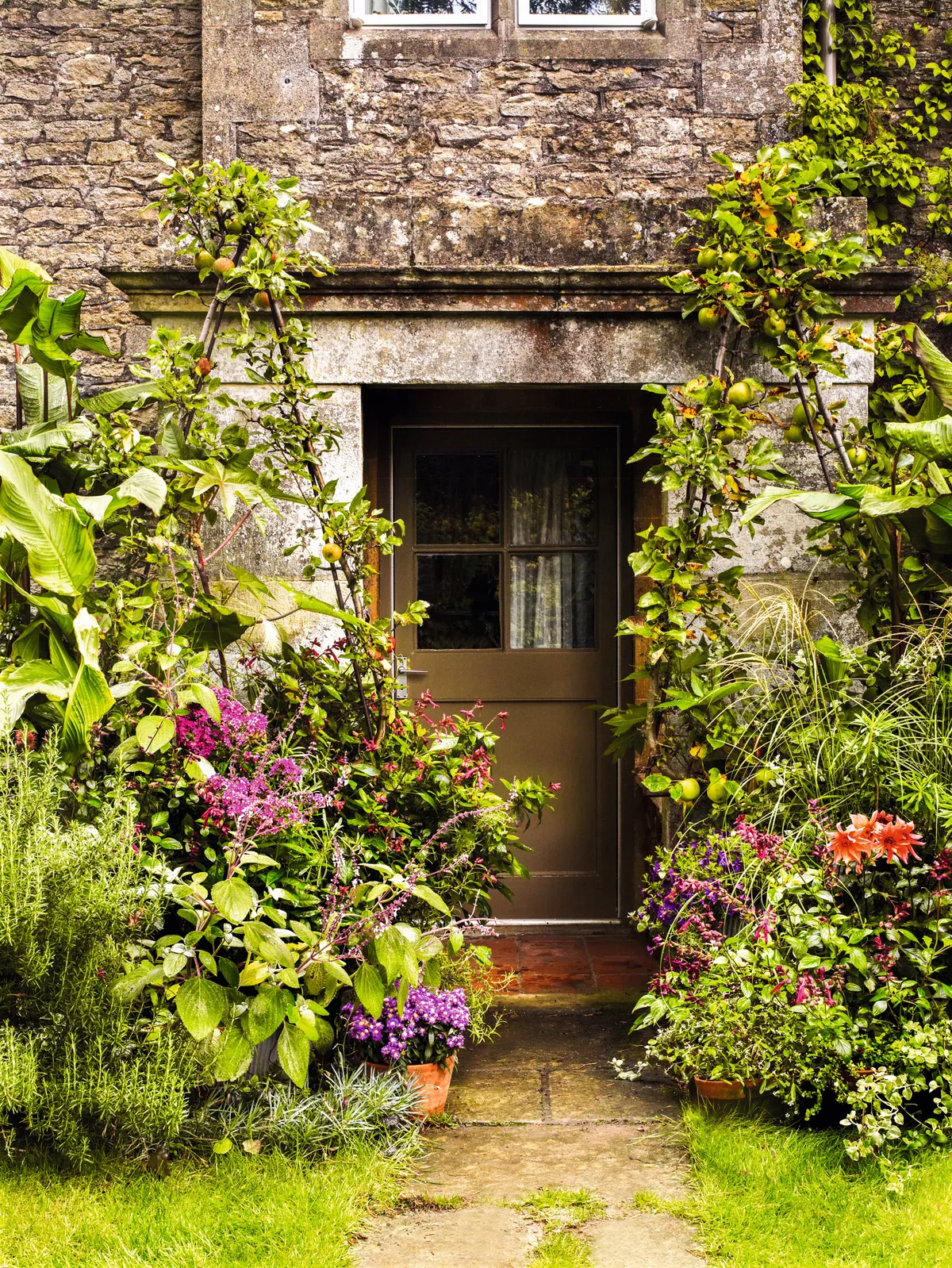Making an entrance
The entrance to my cottage on the estate reflects the ever-developing palette of plants I fall in and out of love with. The only constants are the two espaliered apple trees in dolly tubs, all other pots keep changing, depending on the season. In September I want it to look lush and exuberant. This ensemble is framed by two large Canna ‘Musifolia’, which will never flower here simply because it is too cold, but I grow them for their foliage.
Plants

- Ricinus communis ‘Carmencita Pink’. Dark-green foliage and deep-pink seed pods make this an enduring favourite.
- Salvia ‘Wendy’s Wish’. Another of my favourites with intensely coloured calyces.
- Phlox paniculata ‘Roberta’. Good, rich colour. Ideal for pots. July to September.
- Aster ‘Starletta Dark Blue’. A reliable plant for containers and readily available.
- Miscanthus sinensis ‘Flamingo’. Grass with pink-tinged inflorescences. 1.25m.
- Dahlia ‘Waltzing Mathilda’. Dark foliage and coral-pink flowers with a hint of purple.
- Helichrysum petiolare. Grown for its grey foliage. Control by pruning. 50cm.
- Plectranthus argentatus ‘Silver Shield'. Silver foliage plant with lavender-coloured flower spikes
How to achieve the look

Colours and shapes
Most of the plants around the door are grown in pots, with very few planted in the ground. I change the plants every few weeks, depending on what looks good, which ones are developing strongly and which are my current favourites. The display is also a good way of trying out newcomers and seeing how they perform over the season. The colours vary depending on what is in flower and I can easily spend a Sunday afternoon taking it all apart and grouping the plants back together again, carefully studying the colours of flowers, leaves and stems. This way, it feels more like flower arranging, but each plant has to be grown well in its pot, be healthy and be typical of its type.
Cultivation and care
I grow most plants in a mixture of multi-purpose compost and John Innes No.2, and always make sure there is enough drainage. If you choose high-quality compost it should provide the plants with sufficient nutrients for the season, but a weekly liquid feed will achieve the best results. For a grouping such as this, terracotta or old metal containers look best, but plastic pots are easier to move around, especially for big plants, and a lot cheaper. I spend some time staking and weaving plants into each other, to achieve a tapestry of foliage and flowers so it does not look like a collection of individual pots. Deadheading is also beneficial, although I keep seedheads for effect and seeds.
Words Thomas Unterdorfer is head gardener at Rockcliffe Garden in the Cotswolds
Photographs Andrew Montgomery